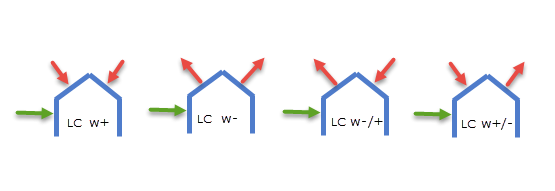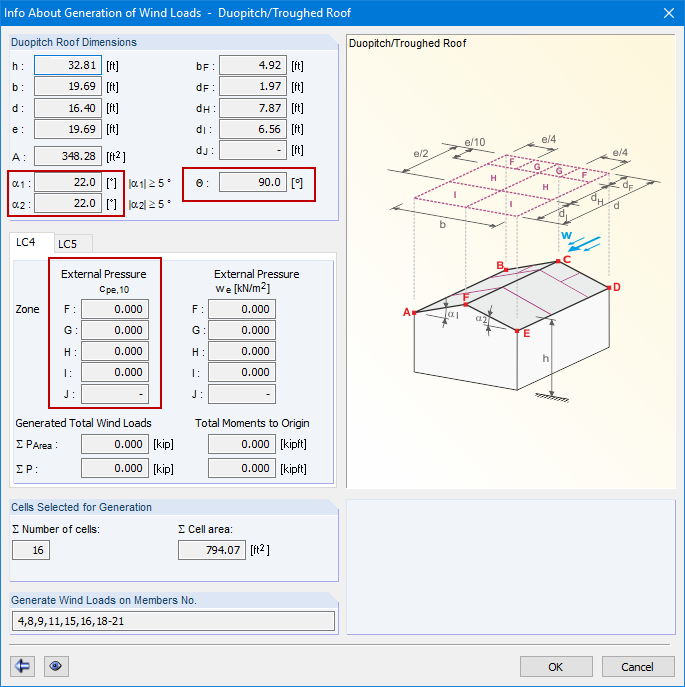For duopitch roofs with a roof inclination > 5°, the roof areas F, G, H, I, and J have to be classified separately according to the windward and leeward sides. For the wind direction of 0° (wind in the longitudinal direction), the positive as well as the negative aerodynamic coefficients have to be taken into account for roof inclinations of up to 45°.
For these cases, this results in a total of 4 possible wind combinations, depending on the building side (see Image 01).
On the other hand, there are no positive external pressure coefficients for the wind direction of 90° (wind on the gable side). For a building with a roof inclination of 45°, you would thus obtain ten possible wind load cases (0° = 4 · 2; 90° = 1 · 2).
LC w+:
Only positive (pressure) aerodynamic coefficients by roof area are used.
LC w-:
Only negative (suction) aerodynamic coefficients by roof area are used.
LC w-/+:
The negative (suction) aerodynamic coefficients are used for the windward side and the positive (pressure) coefficients are used for the leeward side of the roof.
LC w+/-:
The positive (pressure) aerodynamic coefficients are used for the windward side and the negative (suction) coefficients are used for the leeward side of the roof.
For example, if there are only negative coefficients for a load position, only negative loads are applied to the roof surface. Thus, if there is no pressure → these values are set to 0. A load case that only contains values with size 0 could also be deselected during the generation.
For example, this is always possible, as already described, for LC w+ with a wind direction of 90° (gable-sided wind) and roof inclination of > 15°.

